Smart Choices Start with Real Facts.
Real Food vs Processed Food: How to Spot the Difference Easily
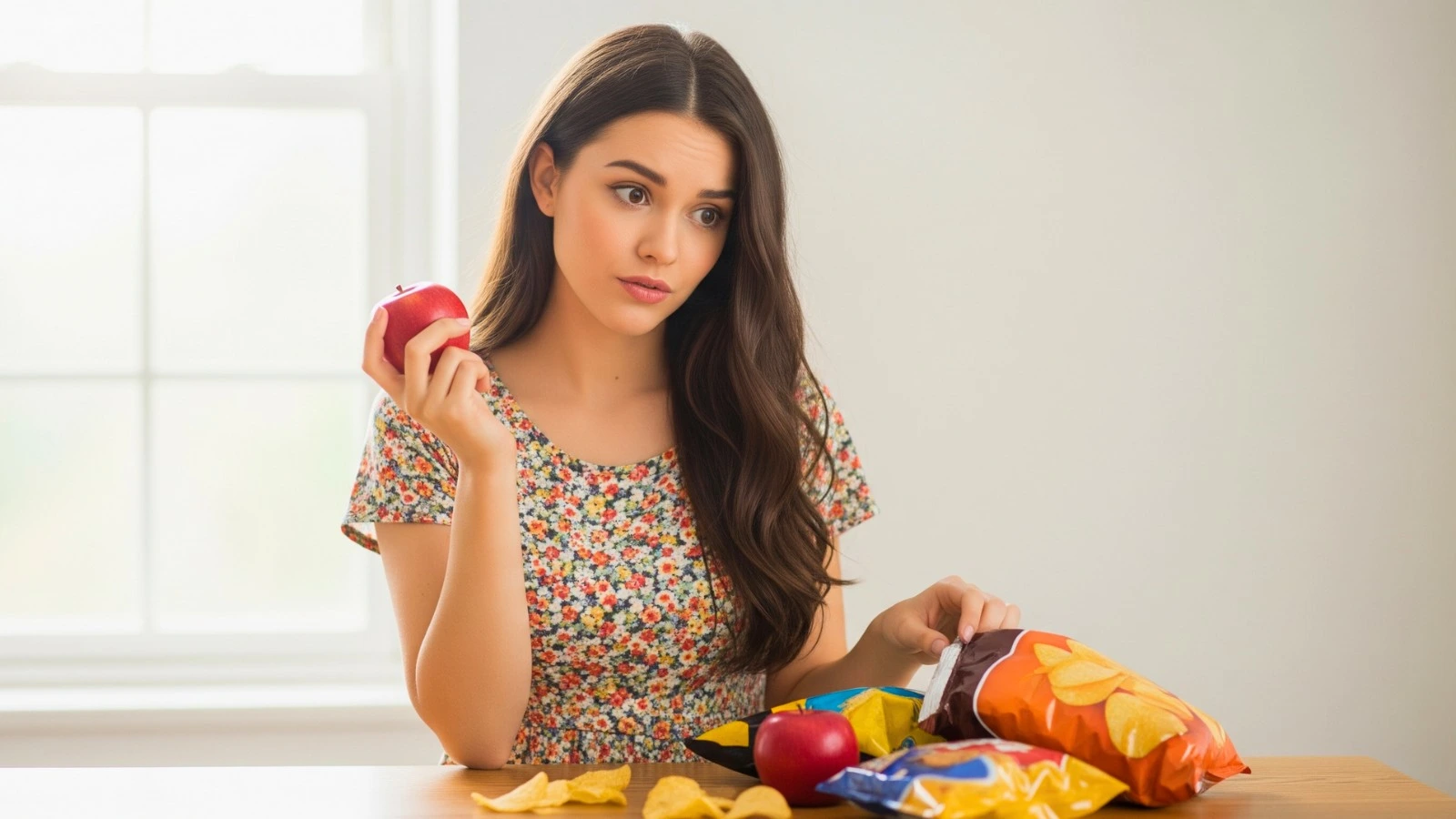
- What Exactly Is “Processed Food”?
- Real Food, In Simple Words
- Visual Comparison #1: Tomato vs Ketchup
- Why Does This Matter?
- Visual Comparison #2: Homemade Roti vs Packaged Bread
- Can You Taste the Difference?
- Quick Test: Can You Guess Which One’s Processed?
- The Problem with Labels
- Visual Comparison #3: Fruit Yogurt vs Homemade Dahi
- So… Is All Processed Food Bad?
- Small Swaps That Work
- Final Thoughts: Why This Matters
- FAQs
Let’s play a quick game.
Imagine two plates in front of you. On one, there’s a homemade bowl of dal with freshly chopped coriander on top. On the other hand, there’s a shiny packet of “instant lentil curry” — same flavour promised, but ready in two minutes.
Which one do you reach for?
Most of us think we can tell the difference between real and processed food. But can we? And more importantly… do we care enough to choose the better one?
This post isn’t about scaring you. It’s about awareness — the small choices we make every day without thinking. Let’s look at what separates real food from the processed stuff, how to spot the difference (even when it’s tricky), and why it matters more than we think.
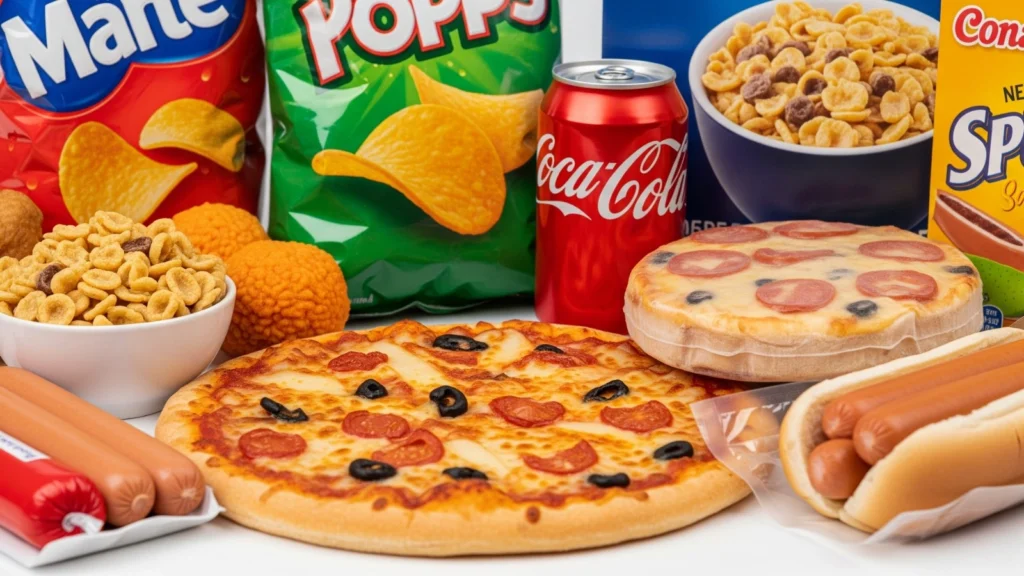
What Exactly Is “Processed Food”?
Processed food isn’t just chips and candy. It’s anything that’s been changed from its original state — chopped, cooked, frozen, packaged, or combined with additives.
There’s a spectrum:
- Minimally processed: Think chopped veggies, frozen fruits, or roasted nuts.
- Moderately processed: Like canned beans or whole-grain bread.
- Ultra-processed: That’s your packaged snacks, flavoured yogurts, instant noodles, sugary drinks, and ready meals.
Ultra-processed foods often contain artificial flavours, preservatives, added sugar, seed oils, and a bunch of ingredients that sound more like a chemistry set than a recipe.
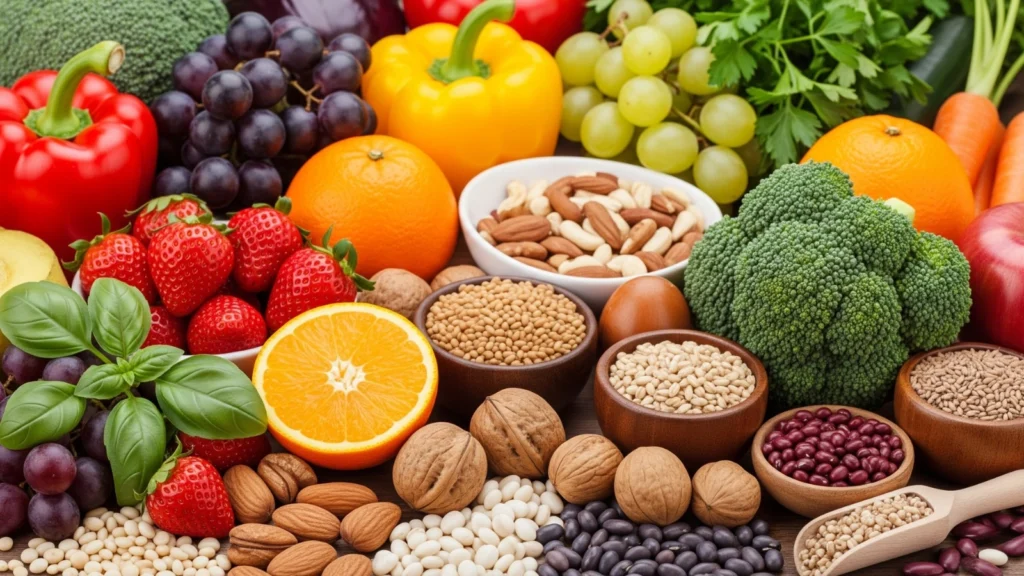
Real Food, In Simple Words
Real food is the kind of stuff your grandmother would recognise. Fruits, vegetables, grains, dairy, eggs, meat, nuts, and seeds — mostly single-ingredient, minimally tampered with.
You don’t need a nutrition label to know what an apple is. But you do need one to understand a fruit snack labelled “apple flavoured bites.”

Visual Comparison #1: Tomato vs Ketchup
Let’s start with a classic.
Real Food:
A ripe, red tomato. Grown, picked, and eaten fresh — full of fibre, vitamins, water, and natural sweetness.
Processed Version:
Ketchup. Now don’t get me wrong, it’s tasty — but read the label. It’s not just tomatoes. It’s sugar (often more than in cola), vinegar, salt, preservatives, and sometimes corn syrup or additives.
Ingredient List Comparison:
Tomato (real): Tomato.
Ketchup (processed): Tomato concentrate, high fructose corn syrup, vinegar, sugar, salt, onion powder, spices, natural flavouring.
Looks simple. But it adds up, especially if you’re using processed stuff every day.
Why Does This Matter?
We’re not here to demonise the occasional ketchup squirt. But when most of what we eat comes from boxes and packets, we run into problems.
Here’s what happens over time:
- Your taste buds start expecting more salt, more sugar, more flavour enhancers.
- Your body gets used to quick calories with fewer nutrients.
- Your gut bacteria get out of balance.
- Your energy dips more often.
- Cravings go up. Mood swings show up. Inflammation creeps in.
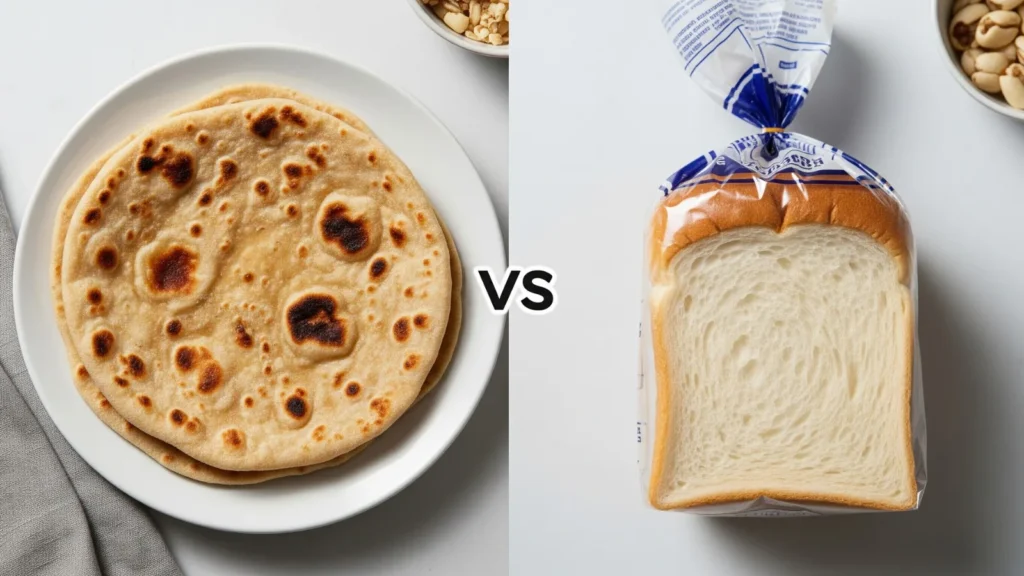
Visual Comparison #2: Homemade Roti vs Packaged Bread
Real Food:
A fresh roti — flour, water, maybe a bit of salt. That’s it.
Processed Version:
Packaged white bread. Soft and shelf-stable, yes — but also loaded with emulsifiers, preservatives, added sugar, and industrial oils.
Ingredient List Comparison:
Roti: Whole wheat flour, water, salt (optional).
White Bread: Refined wheat flour, sugar, soybean oil, yeast, salt, dough conditioners (calcium propionate, mono- and diglycerides), enzymes, preservatives.
That’s not bread. That’s a lab.
Can You Taste the Difference?
Yes, once you reset your taste buds.
When you cut down on processed stuff, something weird happens: real food starts tasting better. A banana tastes super sweet. Your tongue starts picking up on texture, subtle spices, and natural flavours.
But if you’re constantly eating artificial flavour bombs, your brain needs more to feel satisfied — more sugar, more salt, more fat. Real food then feels bland in comparison… but that’s not a problem with the food. That’s the effect of being overstimulated.
Quick Test: Can You Guess Which One’s Processed?
Try this with friends or family:
| Food A | Food B |
|---|---|
| Handful of raw almonds | A handful of raw almonds |
| Boiled potato | Pack of “masala potato chips” |
| Fresh orange juice | Bottled orange drink |
| Steamed rice + veggies | Packaged ready-to-eat biryani |
Let them read ingredient labels (if available) — or just guess.
You’ll be surprised how tricky it is when marketing plays games with words like “natural,” “wholesome,” and “lite.”
The Problem with Labels
Even when you’re trying to do the right thing, food labels can confuse you.
- “Natural” doesn’t mean unprocessed.
- “Made with real fruit” might mean it has 2% fruit concentrate.
- “Low fat” often means high sugar.
- “Multigrain” isn’t the same as whole grain.
And don’t get me started on tiny fonts or hidden ingredients under umbrella terms like “flavourings.”
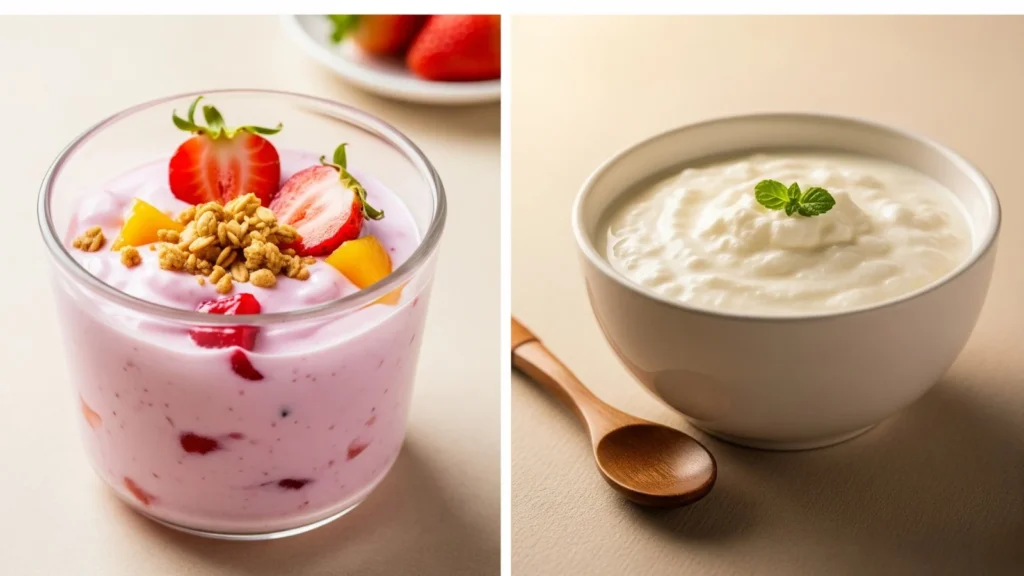
Visual Comparison #3: Fruit Yogurt vs Homemade Dahi
Processed Yogurt Cup:
Usually loaded with sugar, “fruit flavour,” stabilisers, and artificial colours.
Real Version:
Plain homemade dahi with real fruit added.
Ingredient List Comparison:
Processed Yogurt: Milk solids, sugar, fruit concentrate, thickener (INS 1442), acidity regulator (INS 330), stabiliser (INS 407), flavour.
Real Dahi with Fruit: Milk, culture, fresh banana or mango.
Which one feels like it belongs in your body?
So… Is All Processed Food Bad?
Not necessarily.
Some processing is helpful, like pasteurising milk or freezing peas. It makes food safer or last longer without significantly harming its nutritional value.
But the more processed it is — especially ultra-processed — the more it leans toward convenience over nourishment.
Small Swaps That Work
You don’t need to overhaul your diet overnight. Try this instead:
| Instead of… | Try… |
|---|---|
| Sugary cereal | Oats with fruit and nuts |
| Soda | Sparkling water with lemon |
| White bread | Fresh roti or sourdough |
| Packaged chips | Roasted chickpeas or makhana |
| Instant noodles | Rice + veggies + ghee |
It’s not about perfection. It’s about progress.
Final Thoughts: Why This Matters
When you eat real food, something shifts. Not just in your body, but in your relationship with food. You stop obsessing over calories or macros. You feel more connected to what’s on your plate. You get curious. You slow down.
And over time, that one small change (choosing real food more often) starts affecting everything — your energy, your mood, your skin, your gut.
So the next time you’re in the store or in a rush, just ask:
Can I tell the difference?
Because your body definitely can.





